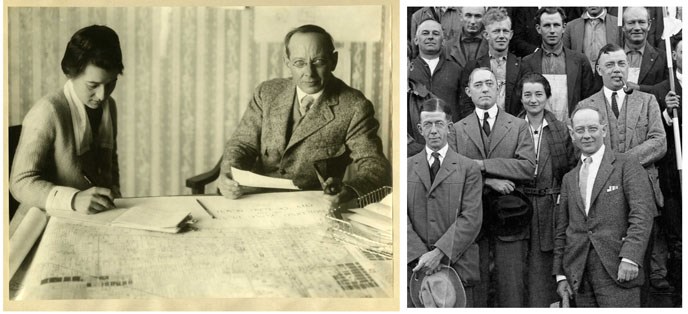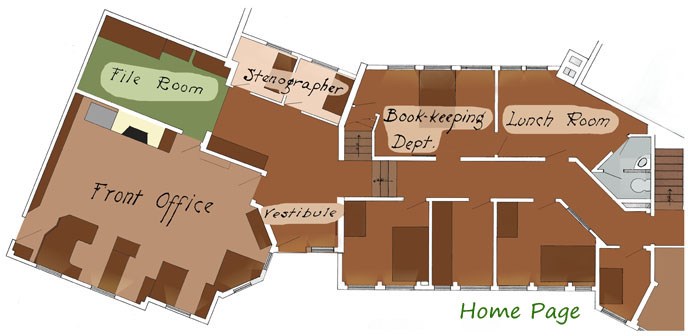|
Stella Obst Like many recent college graduates, Stella Obst was looking for employment following her graduation from Wellesley College. Many encouraged female college graduates to seek out secretarial positions since most professional occupations were off-limits to women. Secretaries were a higher status job in the clerical field and earned decent salaries. Stella had grown up in Brookline and supposedly looked up the Olmsteds because she had read Frederick Law Olmsted's travel writings as a student. She was hired in 1913 and over the next four decades she served as Frederick Law Olmsted Jr.'s secretary. He and the other partners worked in this front office.Stella became an integral part of the firm, even accompanying Olmsted Jr. to California. 
Olmsted Archives, FRLA 45687g-10, Ca. 1930s; Olmsted Family Photograph Collection, Why weren't there female landscape architects at the Olmsted Office? Women faced challenges for starting professional careers in the early twentieth century. While the partners of Olmsted Brothers may have been forward-thinking when it came to landscape design, it appears as though they were men of their time when it came to employing women. In the early 1900s, many people believed that women simply could not handle heavy workloads. However, the Olmsteds still gave due credit to some female practitioners, including Elizabeth Jane Bullard whom they had worked with on a few projects. On recommending Elizabeth Bullard (no relation to secretary Helen Bullard) as superintendent of parks in Bridgeport, Connecticut, Frederick Law Olmsted wrote to the city board that they "should be prepared to trust much to her discretion and to support her against any possible prejudice due to the novelty of the situation in which she will be placed." This possibility of prejudice deterred Bullard. Women had to overcome beliefs about what was proper. However, women were still making their own mark in the field of landscape architecture. Although the first school of landscape architecture, founded at Harvard in 1900, was exclusive to men, the following year the Lowthorpe School of Landscape Architecture for Women opened. Other programs also gave women professional training. Some women founded their own firms, others found work with firms run by men. Early members of the American Society of Landscape Architecture included Elizabeth Bullard and Beatrix Jones Farrand. Women were also involved in conversations about the field in magazines. By the 1930s, many female landscape architects gained prominence for their contributions to the field. Further Reading: Thaisa Way, Unbounded Practice: Women and Landscape Architecture in the Early Twentieth Century (Charlottesville, VA: University of Virginia Press, 2009) 
Want to learn more about the women in the Olmsted office, check out this video. |
Last updated: February 21, 2024
